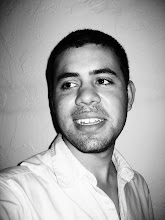
My father recently came to know one of the board members at the Menil Museum here in Houston. (My father supports me a lot and tries to help me meet people that are involved in art around here) So we had lunch with him today and he gave us a personal walk through of the current exhibition,Joaquin Torres-Garcia: Constructing Abstraction with Wood. I had never heard of Joaquin T-G. but I think that somebody knew I was coming and sent me this show. The exhibit focused mostly on the artist's wood pieces, carvings, sculptures, superimposed paintings, and his wooden toys from the 1920s and 1930s. Although the imagery and textual content was different than mine, his overall aesthetic was quite similar to what I have been trying to achieve lately with wood.
I like his system of compartmentalizing everything in his composition. Everything seems to be there for a reason, and there is a lot of different stuff. Even his small wooden toys were very intuitive. He observed that his children were always interested in finding out how things function, so his toys disassemble in various ways. His carvings and wooden paintings were interesting in that they seemed to be telling the same story, a constantly projected vision of the world and how it should be, or maybe how it already is. He repeats a lot of symbols between works, namely anchors, clocks, fish, and religious symbols.



Garcia lived from 1874 to 1949. Although he was originally from Uruguay, he lived and worked in Italy, France, Spain, and New York. For more images and about the exhibit, click here.

 Uncle Charlie (Charlie Hardwick) is a Houston based poster artist who has been making rock posters for over twenty years now. His clients have included bands such as Radiohead, Red Hot Chili Peppers, and the Beastie Boys. I first learned about Uncle Charlie when I was teaching myself how to silkscreen in high school. I was making fliers for my own band at the time, and after handing one to a teacher of mine, she informed me that she was married to one of the premier local poster artists. Naturally I became quite familiar with his work and even got the chance to interview him briefly. Anyway I figured he would be good to share with you all since he is a good example of a working artist from my area of the country that you all may not have come across otherwise.
Uncle Charlie (Charlie Hardwick) is a Houston based poster artist who has been making rock posters for over twenty years now. His clients have included bands such as Radiohead, Red Hot Chili Peppers, and the Beastie Boys. I first learned about Uncle Charlie when I was teaching myself how to silkscreen in high school. I was making fliers for my own band at the time, and after handing one to a teacher of mine, she informed me that she was married to one of the premier local poster artists. Naturally I became quite familiar with his work and even got the chance to interview him briefly. Anyway I figured he would be good to share with you all since he is a good example of a working artist from my area of the country that you all may not have come across otherwise.


